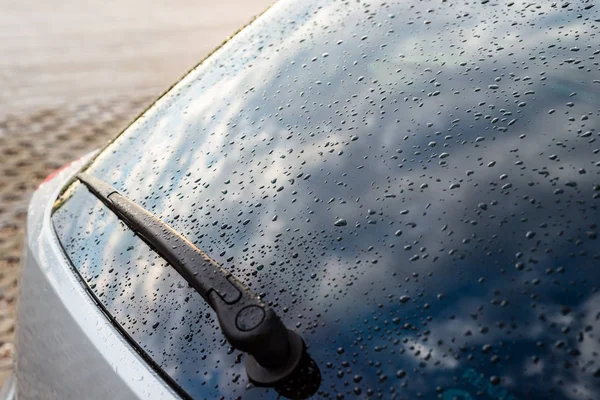Sedans, renowned for their sleek and stylish design, often lack rear wiper blades despite their practicality on other vehicle types. This article aims to shed light on the reasons behind this design choice, exploring the trade-offs between aesthetics, functionality, and the specific needs of sedan owners.
1. Aerodynamics and aesthetics
One key reason for the absence of rear wiper blades in sedans is to maintain the vehicle’s aerodynamic profile. Sedans are designed to cut through the air smoothly, reducing drag and improving fuel efficiency. The addition of rear wiper blades, with their moving parts and potential turbulence, could disrupt this streamlined design. Moreover, not having a rear wiper blade contributes to the clean, uncluttered lines favored by sedan enthusiasts, enhancing the car’s overall aesthetic appeal.
2. Reduced rear visibility obstruction
Sedans typically have a rear window that provides a wide, unobstructed view of the road behind. Their inclined rear design allows for natural water flow, minimizing the accumulation of rain, snow, or dirt, which could hinder visibility. While rear wiper blades are beneficial in hatchbacks and SUVs with vertical rear windows that collect more debris, sedans benefit from their streamlined shape, reducing the need for a rear wiper blade.
3. Focus on front windshield wipers
Sedans prioritize the functionality and effectiveness of front windshield wipers due to their direct impact on the driver’s line of sight. By channeling resources into developing advanced front wiper systems, automakers ensure optimal visibility at the most crucial angle. Sedans often feature advanced wiper technologies, such as rain-sensing wipers, that automatically adjust to varying precipitation levels. By emphasizing front wipers, manufacturers ensure sedan owners can rely on their primary field of vision while driving.
4. Cost-saving considerations
The exclusion of rear wiper blades in sedans helps keep costs down for both manufacturers and consumers. Rear wipers involve additional engineering, manufacturing, and installation expenses. By eliminating this feature, manufacturers can offer sedans at a more competitive price point, making them accessible to a wider range of buyers. Additionally, car owners benefit from lower maintenance costs, as rear wiper blades are prone to wear and tear, requiring occasional replacement.
The absence of rear car wiper blades in sedans is a deliberate design choice influenced by aerodynamics, aesthetics, rear visibility, and cost-saving considerations. While these factors may not suit every driver’s preferences or needs, sedan manufacturers prioritize the overall driving experience, fuel efficiency, and affordability when crafting their designs.
Post time: Jun-30-2023
